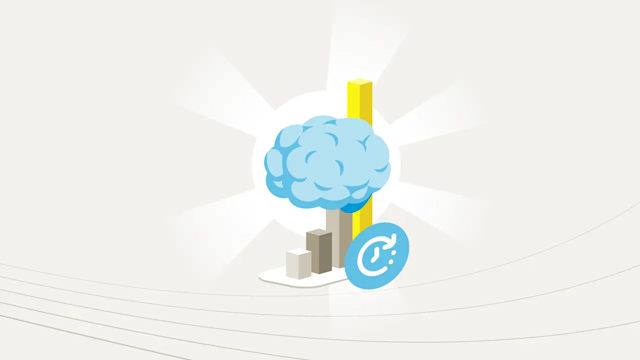Balancing data durability and data availability for high-performance applications
Explore the critical aspects of data durability and availability, understanding their differences, and how they work together to ensure reliable and efficient data storage systems for your company.
Data durability and data availability are important for maintaining reliable and efficient data storage systems. Though they serve different functions, understanding how they differ and how they work together is essential for managing and safeguarding your company’s information.
What is data durability?
Data durability means that once data is in storage, it is protected from loss or corruption, so it remains intact and recoverable, even after years or decades, if necessary. This data protection concept is fundamental in industries where data integrity is paramount, such as in financial services and healthcare.
Examples of ways to improve data durability include:
Redundancy, where multiple copies of data are in storage across different locations
Using robust storage systems, which prevent data loss due to hardware failures or other issues, AWS S3 and Google Cloud storage, for example, implement erasure coding to reconstruct data in the event of failure
Strong security measures such as encryption, access controls, and regular audits to protect against data loss and unauthorized modification
Data lifecycle management establishes policies for data retention, archiving, and deletion
What is data availability?
In contrast, data availability refers to the accessibility of data in storage at any given moment. It’s crucial for systems that require constant uptime, where even brief interruptions can lead to issues, particularly in sectors such as e-commerce and telecommunications. Availability is often measured by uptime percentages, which reflect how consistently a system is operational and responsive. Availability expectations are typically outlined in depth in a service level agreement (SLA).
Examples of ways to improve availability include:
Load balancing, or distributing workloads and storage evenly across multiple servers or nodes to prevent a single server from being overwhelmed and unable to respond.
Clustering, where multiple servers work together on the same workload, helps ensure that services remain available if one server fails.
Failover, where the system automatically redirects traffic to other clusters or nodes if one fails.
Regular backups and disaster recovery planning so data can quickly be restored if needed.
Replication, where redundant copies of data are saved across multiple servers in a cluster or locations to provide access if one server goes down.
High-availability architecture, using hardware with redundant components and failover mechanisms, many times combined with load balancing.
Data durability vs. availability
While data durability and availability are both crucial for a robust data storage strategy, they address different aspects of data management.
What matters is how to balance them. Too much focus on data durability can slow down data access while prioritizing data availability might compromise the long-term safety of the data—especially because balancing high availability with data security can be tricky, as measures that enhance one may compromise the other.
Data durability and data availability in various industries
Consequently, both data durability and data availability play important roles in helping systems meet industry demands. By comparing use cases in different industries, you can better understand the importance of both data durability and data availability.
Financial services
Data is the backbone of every transaction, customer record, and compliance report in financial services. Maintaining the integrity of transaction records in storage over many years is essential for audits, customer disputes, and data retention regulatory compliance.
In this industry, data durability is the priority. Any loss or corruption could lead to financial loss, legal repercussions, and a loss of customer trust.
E-commerce
E-commerce operates on the principle that data in storage must be available at all times, especially during peak shopping periods or flash sales. In this industry, data availability is the priority. Whether it's processing transactions, managing inventory, or personalizing customer experiences, any downtime can result in lost sales and reduced customer loyalty.
Telecommunications
In contrast, telecommunications companies need both data durability and data availability. On the one hand, they need to accurately preserve customer data and operational logs in storage over long periods. On the other hand, they require near-instantaneous access to data to manage networks, provide services, and address issues in real time.
Balancing these storage needs can be challenging, but it's crucial for maintaining service reliability and customer satisfaction.
Best practices for ensuring data durability and data availability
Building a reliable data storage infrastructure requires a strategic approach to both data durability and availability. While these concepts serve different purposes, they are interdependent in creating a system both resilient and accessible. Here are some best practices that organizations can adopt to help support both.
Data durability:
Redundant storage: By storing multiple copies of data across different physical locations and cloud storage, organizations help protect against data loss due to data center hardware failures, natural disasters, or other events. With redundancy, even if one copy is compromised, others may remain intact.
Advanced backup strategies: Regular backups are a cornerstone of data durability. However, it’s not just about having backups; it’s about how they are managed. Adding strategies such as incremental backups (where only changes since the last backup are saved) and snapshotting (capturing the state of data at a specific point in time) further reduces the risk of data loss and speeds recovery time while reducing storage costs.
Data replication: Replication, where data is synchronized across multiple nodes in a distributed system, is a crucial practice for maintaining data durability. It ensures that the data can be retrieved from another without any loss or corruption if one node fails. In more advanced systems, replication can be configured to provide near-instantaneous failover, perhaps in cloud storage, minimizing downtime.
Data integrity checks: Regular integrity checks let you know when data is changed, either deliberately or accidentally, so you can fix it quickly. Examples include checksums or hash functions.
Data availability:
Fault tolerance: Systems should be designed to continue operating even when components fail, such as with Microsoft Azure’s availability zones. For example, with clustering, multiple servers work together on the same workload. If one fails, others pick up the slack without service interruption.
Load balancing: Distributing workloads evenly across multiple servers/nodes or clusters reduces any single point of failure and helps the system remain responsive even under heavy traffic. Load balancing also helps optimize resource use, improving performance and availability.
Monitoring and alerting: By setting up real-time alerts, organizations detect and address potential issues before they escalate. Tools that monitor server and storage performance, network traffic, and data access patterns are particularly useful.
Disaster recovery: Even with these precautions, things happen. A disaster recovery plan helps restore data availability faster. It should include steps for data restoration, data center redundancy, alternative access routes, and communication strategies to ensure business continuity during outages.
Aerospike’s role in data durability and data availability
Organizations need systems that offer both reliability and speed to maintain a competitive edge in data-driven industries. This is where Aerospike’s technical expertise comes into play, delivering solutions that meet the demands of both data durability and data availability.
How does Aerospike support data durability?
At the heart of Aerospike’s approach to data durability is its distributed architecture. This design distributes data across multiple nodes, helping keep a point of failure from compromising the system. Aerospike also uses synchronous replication, meaning data is written to multiple storage nodes before the transaction is considered complete. This redundancy strategy ensures that, even in the case of a sudden node failure, the data remains intact and retrievable from other nodes.
Finally, Aerospike’s support for persistent storage options, such as SSDs, adds an extra layer of durability.
How does Aerospike support data availability?
Aerospike's high availability is achieved through a combination of real-time replication and automatic failover. When a node becomes unavailable, the system reroutes queries to other nodes to protect against data access interruption. This capability is crucial for industries such as telecommunications and e-commerce that require continuous uptime.
Aerospike’s architecture is also designed for horizontal scalability, allowing additional nodes to be added as data demands grow. This scalability helps the system maintain high availability without performance degradation, even as the company scales.
Finally, Aerospike uses multi-site clustering. By replicating data across geographically dispersed clusters, Aerospike helps protect against regional failure from affecting overall data availability.
Tailoring solutions to industry needs
Aerospike’s versatility allows you to choose how to adapt it to the unique challenges your industry faces. For financial services, you can prioritize transaction integrity while supporting high-speed access to data in storage. In e-commerce, set it up to handle massive amounts of data in real time to provide good customer experiences even during peak traffic times. In telecommunications, configure it to help maintain reliability and keep your customers happy and running efficiently.
By focusing on data durability and availability, Aerospike helps organizations protect their data in storage while keeping it readily accessible. This dual capability is particularly important for industries that require both resilience and speed in their data management strategies.
Finding the right balance
Balancing data durability and availability is not just a technical challenge; it's a critical requirement for organizations operating in high-stakes industries. As data in storage continues to grow in volume and importance, the ability to maintain both data durability and data availability becomes a differentiator for businesses looking to stay ahead.
Data durability means that once information is stored, it remains intact and protected from loss or corruption, preserving its value over time. On the other hand, data availability means that this information is readily accessible whenever and wherever it is needed, enabling continuous operations and real-time decision-making.
Achieving this balance at web-scale demands a forward-thinking data management strategy. Aerospike’s distributed architecture and real-time replication provide data durability, availability, and the high performance needed to power real-time applications.
For industries where data is mission-critical — such as financial services, e-commerce, and telecommunications — Aerospike provides the reliability and speed needed to build and maintain a competitive edge. By focusing on both the preservation and accessibility of data, Aerospike helps organizations protect their information while using it to improve business outcomes.




